Results 6,611 to 6,620 of 12094
Thread: Anandtech News
-
01-06-17, 10:04 AM #6611
Anandtech: ASUS VivoPC X: Core i5, GeForce GTX 1060, 512 GB SSD, 5-Liter Chassis, $79
ASUS at CES has introduced its new game console-like PC that weds relatively high performance, compact dimensions and a moderate price tag. The new VivoPC X packs Intel Core i5 CPU and NVIDIA GeForce GTX GPU into a 5-liter chassis.
Traditionally, ASUS has positioned its Vivo-series computers as miniature PCs for mainstream tasks, whereas ROG systems were designed for gamers and multimedia enthusiasts. With the release of the VivoPC X, the computer maker changes that positioning and offers an SFF gaming-grade system under the Vivo brand. The reasons for the decision are simple: sales of small form-factor PCs are growing and so are sales of machines for gamers. ASUS wanted to address both markets with computers at more or less mainstream prices and the VivoPC X is a result of this decision. The mini PC is positioned below the ROG GR8 II and its performance is lower, however, ASUS thinks that the combination of price and performance will satisfy many people looking for a console-like gaming PC.
The ASUS VivoPC X M80 is based on the Intel Core i5-7300HQ (4C/4T, 2.5 GHz/3.5 GHz, 6 MB cache, HD Graphics 630, 45 W) mobile processor, the Intel HM175 PCH as well as NVIDIA’s GeForce GTX 1060 graphics processor with G-Sync support. Since many gamers demand to have the performance of an SSD and capacity of a hard drive, the system will be equipped with a 512 GB M.2 SATA SSD as well as a 2 TB HDD with 7200 RPM spindle speed. The PC also comes with 8 GB of DDR4-2133 memory. To cool down the system components, ASUS uses a custom cooling system consisting of a blower for the GPU and a large aluminum heatsink for the CPU.
When it comes to connectivity, the ASUS VivoPC X has four USB 3.0 Type-A ports, two USB 2.0 headers, Gigabit Ethernet, an IEEE 802.11ac Wi-Fi with BT 4.1 module, three display outputs (two HDMI and one DisplayPort), 5.1-channel audio with Sonic Suite software enhancements and so on.ASUS VivoPC X Specifications M80 CPU Intel Core i5-7300HQ
Quad Core
2.5 GHz/3.5 GHz
6 MB cache
HD Graphics 630PCH Intel HM175 Graphics NVIDIA GeForce GTX 1060 with GDDR5 memory Memory 8 GB of DDR4-2133 Storage 512 GB SSD (SATA)
2 TB 2.5" HDD (7200 RPM)Wi-Fi IEEE 802.11ac Wi-Fi + BT 4.1 Ethernet GbE Display Outputs 2 × HDMI 2.0b
1 × DisplayPortAudio 5.1-channel audio USB 4 × USB 3.0 Type-A (5 Gbps)
2 × USB 2.0 Type-AOther I/O - Dimensions 75.94 mm × 259.8 mm × 279.9 mm
2.99 × 10.23 × 11.02 inchesPSU 230 W OS Windows 10
The computer uses mobile PC components in a bid to keep its physical size small and power consumption low: its volume is about five liters and its power consumption is less than 230 W (it uses an external power brick to feed itself). Meanwhile, usage of such components also means that its future upgrades will be rather complicated if possible at all (for example, the GPU is soldered to the motherboard and is thus not upgradeable).
The ASUS VivoPC X will be available in March, 2017, for $799.
Gallery: ASUS VivoPC X: Core i5, GeForce GTX 1060, 512 GB SSD, 5-Liter Chassis, $799





Related Reading:
- Calyos NSG Cube: Passively Cooled SFF PC with Intel Core and GeForce GTX 1060
- GIGABYTE's New Console: The 'Gaming GT' PC Launched with Core i7-K, GTX1080, TB3
- Zotac ZBOX MAGNUS EN1080 SFF PC Review: A Premium Gaming Powerhouse
More...
-
01-06-17, 10:37 AM #6612
Anandtech: ASUS ProArt PA32U Display: 4K, 1000 Nits Brightness, 95% DCI-P3, 85% Rec.
ASUS introduced a new professional-grade monitor at CES this week. The unit supports a 4K (UHD) resolution, HDR10, a very high brightness and an astonishing range of color gamuts required by artists, designers, photographers and video professionals today, including the Rec. 2020 (BT.2020) standard. The ProArt PA32U will be available in the second half of this year at a rather hefty price tag, as you can imagine. In addition, ASUS announced its ProArt PA27AQ monitor aimed at the entry level segment of the professional market.
The ASUS ProArt PA32U uses a 4K UHD panel with HDR capabilities, a quantum dot film and a special backlight featuring 384 LED zones that enable 1000-nit brightness and support for local dimming. The manufacturer notes that its new panel with quantum dots, backlighting and calibration enable the monitor to cover 99.5% of the Adobe RGB, 85% of the Rec. 2020, 100% of the sRGB and 95% of the DCI-P3 color spaces, which makes the display particularly appealing to artists and photographers (Adobe RGB) as well as to video editors and animation designers who do post-production work for digital cinema or TV (DCI-P3 and BT.2020). The number of features, as well as the use of quantum dot technology, represents an interesting combination for a professional display. Moreover, it looks like the ASUS ProArt PA32U will be one of the first mass-market monitors supporting the Rec. 2020 color gamut at all and covering 85% of it.
The ProArt PA32U monitor will be calibrated at the factory, but people with appropriate equipment will be able to further tune them their particular needs. The ProArt PA32U stores all the color parameters locally (and not on the PC), so users will be able to use it with different devices without the necessity to recalibrate it. This will be particularly valuable for those who works on Apple macOS and Microsoft Windows platforms. To hook up the monitor to either PC, the PA32U is equipped with a Thunderbolt 3 input (which means DP 1.2 over a USB-C cable), but we do not know whether other ports are supported.The ASUS ProArt Displays Specifications ProArt PA320U ProArt PA27AQ Panel 32" with quantum dots 27" IPS Native Resolution 4K 2560 × 1440 Maximum Refresh Rate 60 Hz (?) Brightness 1000 cd/m² unknown Contrast high unknown Viewing Angles 178°/178° horizontal/vertical (?) Pixel Pitch 0.185 mm 0.233 mm Pixel Density 138 ppi 109 ppi Anti-Glare Coating Yes (?) Color Gamut Adobe RGB: 99.5%
DCI-P3: 95%
sRGB: 100%
Rec. 2020: 85%sRGB: 100% Inputs 1 × Thunderbolt 3
1 × DP 1.2 (?)1 × Thunderbolt 3
1 × DP 1.2 (?)Extras ASUS ProArt Calibration with color parameters saved locally
Since this is a preliminary announcement, ASUS does not disclose whether it uses an IPS or an IGZO panel (like it used for its previous-generation flagship professional display) for its PA320U as well as details about the LUTs (look-up-tables), refresh rate and so on. We do understand that the panel is an LCD based on usage of quantum dots and high, but not prohibitively high, price.
For people who do not need 4K UHD resolution, Rec. 2020 or DCI-P3 color spaces and HDR, ASUS plans to offer its 27” ProArt PA27 AQ monitor with 2560 × 1440 resolution, sRGB color gamut and Thunderbolt 3 input. The monitor will also come pre-calibrated and will support the same ProArt Calibration features as its bigger brother (color-accuracy tuning, uniformity compensation local store of parameters, etc.).
The ASUS ProArt PA32U will be available in Q3 2017 for $1799 – $1999.
Pricing of the ProArt PA27AQ (as well as its availability timeframe) are unknown.
Related Reading:
- LG Announces 32UD99: 4K IPS Display with 95% DCI-P3, HDR and USB-C
- BenQ Launches the SW320: a 4K Display with HDR for Professionals
- Panasonic Develops IPS Panel with 1,000,000:1 Contrast Ratio, 1000 Nits Brightness
- EIZO Launches ColorEdge CG2730 and CS2730 2560×1440 Displays for Professionals and Prosumers
- Dell Introduces UltraSharp UP3017 30-Inch Professional Display with 16:10 Aspect Ratio and DCI-P3 Color Space
More...
-
01-06-17, 11:30 AM #6613
Anandtech: HP Announces Omen X 35-Inch Curved Display for Gamers
HP at CES introduced its first ultra-wide curved display for gamers that belongs to the company’s Omen X lineup. The unit will be among the largest monitors from HP and also the company’s first one to support NVIDIA’s G-Sync technology. The release of the Omen X 35” screen emphasizes growing importance of gaming hardware for HP.
The HP Omen X 35” display is based on an AMVA+ panel with 3440×1440 resolution, 300 nits brightness, 1800R curvature, a 2500:1 contrast ratio, a 100 Hz refresh rate and a 4 ms response time, which makes for an interesting combination of characteristics. To smooth the gaming process, the monitor supports NVIDIA’s G-Sync technology, but the maker does not disclose supported working range of the tech. HP says that the monitor can reproduce 16.77 million colors and supports 100% of sRGB color gamut, which is something logical to expect from a gaming display that will run primarily Microsoft Windows.
For connectivity, the Omen X 35” can use either a DisplayPort 1.2 or an HDMI 1.4 input. In addition, the monitor has a three-port USB 3.0 Type-A hub, an audio input and a headphone jack. Since the HP Omen X 35” is a premium monitor for gamers, it does not have integrated speakers because the majority of gamers use standalone audio systems or headphones.HP Omen X 35" Specifications X3W57AA#ABA Panel 35" AMVA+ Native Resolution 3440 × 1440 Maximum Refresh Rate 100 Hz Response Time 4 ms GTG Brightness 300 cd/m² Contrast 2500:1 Viewing Angles 178°/178° horizontal/vertical Curvature 1800R Color Gamut 100% sRGB Dynamic Refresh Rate Tech NVIDIA G-Sync Pixel Pitch 0.2382 mm × 0.242 mm Pixel Density 106 PPI Inputs 1 × DP 1.2
1 × HDMI 1.4Audio 3.5 mm input/output USB Hub 3 × USB 3.0 Type-A connectors
1 × USB 3.0 Type-B inputPower Consumption Idle: 0.5 W
Active: 120 WLink X3W57AA#ABA
HP will position its Ultra WQHD Omen X 35” as its top-of-the-range monitor for gamers and will price it accordingly, at $1300 when it becomes available in March. Curvature, 21:9 aspect ratio, thin bezel and NVIDIA’s G-Sync technology will be the main selling points of the monitor. At present, there is only one competing display with 3440×1440 resolution and similar features (the ASUS ROG SWIFT PG348Q), so, HP’s offering will be comparable with its direct rival and ahead of other suppliers. Meanwhile, the display will be covered by HP’s one-year limited warranty, which is considerably shorter than other suppliers of monitors provide.
Gallery: HP Announces Omen X 35-Inch Curved Display





- Acer Introduces A Pair Of Predator Gaming Displays
- ASUS VA326H and VA326N-W: 31.5-Inch Curved 144 Hz FHD Displays for $399
- Samsung CFG70: Curved 144Hz Displays with Quantum Dot Backlighting and AMD FreeSync
- Dell Unveils UltraSharp U3417W: Makes Its Curved Display More Curved
- LG Announces the 34UC79G: 34-Inch Curved 21:9 Display with 2560 × 1080 Resolution, 144 Hz Refresh Rate for $700
- LG 38UC99 Announced: 37.5-Inch Curved 21:9 Display with 3840×1600 Resolution
More...
-
01-09-17, 11:02 AM #6614
Anandtech: Linksys WRT32X Gaming Router Announced with Killer Prioritization Engine f
Rivet Networks, the company behind the Killer brand, has been on a roll lately with the launch of a new Ethernet controller (E2500) back in September 2016. Killer's selling proposition is the fine-grained QoS settings that are automatically applied to certain types of traffic, resulting in better user experience for Internet usage scenarios like online gaming and video conferencing. Till now, their IP has been restricted to client devices with their NICs installed. However, that restricted the effectiveness of their prioritization algorithms to traffic originating from that machine only. In order to be effective in the multi-device usage scenarios of the modern home, the algorithms effectively need to be resident in the router.
This CES, they have partnered with Linksys for the launch of the first router with the 'Killer Prioritization Engine'. The Linksys WRT gaming edition router - the WRT32X - works closely with router clients that are Killer endpoints (various notebooks with Killer Wi-Fi and/or desktops with Killer wired NICs). Within the consumer's residence, there is an end-to-end optimization of certain types of traffic for latency minimization. This ensures lesser lag and smoother streaming / video conferencing. Other types of traffic such as bulk downloads are given a lower priority.
The hardware itself is a Tri-Band AC3200 (N600 + AC2600) solution using 3x3 radios (one 5 GHz and one 2.4 GHz). Note that the 3x3 5 GHz band is marketed with the 'Tri-Stream 160' tag - implying the use of a 160 MHz-wide channel that allows up to 867 Mbps per stream (and, a total of 2.6 Gbps for a 3x3 configuration). The radio belong to the Marvell Avastar 88W8964 family. Other platform details include:
- 1.8 GHz Dual-Core ARM CPU [ Marvell ARMADA 38x, with a dual-core Cortex A9 host processor ]
- MU-MIMO Technology for airtime efficiency
- QoS engine powered by Killer Networking
- Exclusive optimization for Killer Networking gaming clients in MSI, Alienware, Razer etc.
- DFS certified for operation in the clear DFS channel airspace
- 256MB Flash and 512MB of DDR3 Memory
- 4 high-performance Antennas and high-powered PAs for better range
- 5-port SOHO-grade Gigabit Ethernet switch with TCAM (1x WAN, 4x LAN)
- eSATA, USB 3.0, and USB 2.0 Ports for NAS-like network storage
- Custom-built firmware specially tuned for online gaming traffic
The router is expected to become available in Spring 2017 for $300. We have long been wary of the effectiveness of the Killer solutions in a household with multiple clients simultaneously accessing the Internet. The move towards integrating the algorithms in the router addresses most of our concerns. It ensures that the consumer is able to fully realize the benefits of the Killer solution in their gaming notebooks and PCs.
More...
-
01-09-17, 01:56 PM #6615
Anandtech: SCiO Molecular Sensor Added to Smartphone: Reads Chemical Composition of M
I first saw Consumer Physics’ SCiO handheld scanner a couple of years ago and was impressed by its ability to identify materials by scanning and analyzing their chemical composition. In the intervening years, Consumer Physics has partnered with Analog Devices to increase the sensor’s accuracy and reduce its size, and at CES 2017, the company announced the first smartphone with an integrated SCiO sensor, making this technology even easier to carry and use.
The Changhong H2 has a 6-inch 1080p display and a 16MP rear camera. Inside is an octa-core CPU running at up to 2.0GHz paired with 4GB of RAM and 64GB of internal storage, all powered by a 3000mAh battery. The H2’s standout feature, though, is the new sensor.
The SCiO sensor uses near-infrared spectroscopy to identify a material’s molecular content. By illuminating an object with a broadband light source and using the spectrometer, a type of optical sensor, to break the reflected light into its constituent components, SCiO’s signal processing algorithms compare the reflected light’s wavelengths to the original emission to create a spectral fingerprint. This technique works because molecules will only absorb photons at certain energy levels, which means specific wavelengths will be missing or attenuated in the reflected light.
The Changhong H2’s sensor allows you to virtually “taste” food, measuring the sweetness of fruit for example, or measure how ripe fruits and vegetables are. It can identify specific liquids, tell you if the pills in an unmarked bottle are vitamins or a prescription pain killer, or even tell you if the Viagra you bought online from that sketchy website is real or fake. You can even use it to measure body fat and analyze the nutritional content of food.
The SCiO sensor module sits next to the camera on the back of the Changhong H2. Scanning an object involves opening an app and placing the sensor close to its surface, within 0.5-2.0 cm. It takes about 1.5 seconds to collect data. The app then compares the material’s spectral fingerprint to thousands of others stored in a cloud-based database for identification, as shown in the demonstration below.
Consumer Physics is working with companies to integrate its sensor into other products as well, such as the DietSensor scale—it also makes an app for the Changhong H2—that scans and weighs food to determine the calorie count and ratio between carbohydrates, fat, and protein. There’s also an SDK for third-party developers to develop apps that leverage the sensor’s capabilities.
The Changhong H2 will be available in China for 2999 RMB starting in June 2017 and will come to the US and other regions later in the year.
More...
-
01-09-17, 01:56 PM #6616
Anandtech: Nokia 6 Announced: Qualcomm Snapdragon 430, 5.5-Inch Display, Android 7
On the day CES 2017 closed its doors, HMD Global introduced its first Nokia-branded smartphone that will be available exclusively in China in the coming weeks. The Nokia 6 handset will feature a 5.5-inch display, a mainstream Qualcomm SoC and will come in an aluminum uni-body. Later on, the company plans to introduce new Nokia smartphones for other regions.
Just in case you were not following Nokia recently, HMD Global (a company established and run mostly by former Nokia executives) and FIH Mobile (a subsidiary of Foxconn) inked several deals with Microsoft and Nokia last year that gives them an ability to develop (under supervision of Nokia), build and sell Nokia-branded smartphones based on the Google Android OS. In particular, HMD obtained exclusive rights to use the Nokia trademark on mobile phones and tablets globally (except Japan) for the next 10 years, standard essential cellular patent licenses, software for feature phones and some other IP. Meanwhile, Foxconn acquired a manufacturing facility in Hanoi, Vietnam, which is used to produce Nokia-branded devices along with customer contracts, critical supply agreements, sales and distribution assets and so on. Under the terms of the agreements, HMD will handle development as well as marketing and will have full operational control of sales and distribution of Nokia-branded mobile phones and tablets (even though formally these assets belong to Foxconn).
The Nokia 6 will be the first smartphone developed by HMD with certain input from Nokia. Despite being the first, the new unit will not be a flagship halo product for the global audience, but a mainstream solution aimed at the world’s largest market (in terms of volume). The move makes sense because HMD needs to earn money and capture market share to ensure long-term success and China is a good place to start.
Inside the Nokia 6 is Qualcomm’s 430 SoC with eight ARM Cortex-A53 general-purpose cores at up to 1.4GHz, an Adreno 505 GPU and an integrated X6 LTE modem. The SoC is accompanies by a generous 4GB of LPDDR3 RAM as well as 64GB of internal NAND flash memory (without further expansion capabilities). The phone has a 5.5-inch FHD IPS display with a polarizer film covered with 2.5D Gorilla Glass for protection. Imaging capabilities of the Nokia 6 include a 16MP sensor with f/2.0 aperture (we do not know whether this one has OIS or other premium features, but most likely it does not) and a dual LED flash on the back as well as an 8MP sensor with f/2.0 aperture on the front. As for audio, the handset has a 3.5-mm TRRS audio jack on top, stereo speakers located on top and bottom edges as well as software support for Dolby Atmos. For local connectivity, the phone uses 802.11ac Wi-Fi, Bluetooth 4.1 and a microUSB port. The smartphone is powered by a 3000mAh battery, but so far HMD has not disclosed details about its battery life and other peculiarities.
The Nokia 6 comes in a black 6000-series aluminum uni-body chassis with flat edges that are milled using a CNC machine from a single brick of aluminum. Nokia says that the enclosure is then anodized twice and polished five times. The antenna is separated from the rest of the back cover using polycarbonate strips (a popular method nowadays), but it is hard to tell based on pictures how well the lines match the color and texture of the chassis. Meanwhile, flat edges of the device are polished to prevent them from wearing out, whereas the glass has curved edges to give the phone a smoother feeling during use. Following the latest trends, developers also opted for capacitive touch home, back and recent apps buttons on the Nokia 6. Overall, HMD and Nokia tried to give their mainstream smartphone a premium look and feel. Instead of using polycarbonate, like the Lumia family, it switched to aluminum, which may not be the most durable material, but which at least looks good.Nokia 6 Preliminary Specifications SoC Qualcomm Snapdragon 430 (MSM8937)
8x ARM Cortex-A53 @ 1.4 GHz
Adreno 505RAM 4GB LPDDR3 Storage 64GB (eMMC) Display 5.5-inch 1920x1080 (403 ppi) with 2.5D Gorilla Glass Network 4G: LTE FDD, LTE TDD
3G: WCDMA (DC-HSPA+, DC-HSUPA), CDMA1x, EV-DO, TD-SCDMA
2G: GSM/EDGELTE Down: 150 Mb/s
Up: 75 Mb/sAudio Stereo speakers
3.5-mm TRRS audio jack
2x NXP TFA9891 amplifiers (rumoured)
Dolby Atmos supportDimensions 154 × 75.8 × 7.85 mm (rumoured) Rear Camera 16MP with f/2.0 aperture and dual LED flash Front Camera 8MP with f/2.0 aperture Battery 3000mAh (rumoured) OS Android 7 Connectivity 802.11ac Wi-Fi, Bluetooth 4.1, microUSB 2.0 Navigation GPS, GLONASS SIM Size 2x NanoSIM Colors Black Launch Country China Price ¥1699 ($245)
When it comes to the operating system, the Nokia 6 will run Android 7, but it is unclear whether the OS has any enhancements or exclusive features. It is possible that the mainstream smartphone for China will only offer “vanilla” Android, which helps to speed up its time-to-market.
HMD Global will participate in MWC next month and this is where the company is expected to introduce other models in the new lineup of Nokia-branded smartphones. Meanwhile, it is interesting to note that the company announced the first Android-based Nokia smartphone (and, basically, the return of the brand to the smartphone market) a day before the 10th anniversary of Apple’s iPhone announcement.
The Nokia 6 smartphone will be available in the coming weeks in China, exclusively from JD.com for ¥1699 ($245).
Gallery: Nokia 6 Announced: Qualcomm Snapdragon 430, 5.5-Inch Display, Andoid 7





Related Reading:
- HMD Closes Nokia Brand and Patents Deal with Microsoft, Smartphones Due in 2017
- Nokia Is Set to Return to Smartphones and Tablets: What to Expect?
- Microsoft Streamlines Its Smartphone Business Again, Lays Off 1850 People
- HP’s Elite x3 Windows 10 Smartphone to Cost $699, Set to Be Available Worldwide
More...
-
01-10-17, 06:52 AM #6617
Anandtech: Keyssa at CES 2017: Design Wins, Prototypes, Refinement
Keyssa is no longer a new name, but this year at CES 2017 they provided some interesting progress updates and also provided a sneak peek at some fairly interesting products. The first, and probably most telling sign of where our industry is headed, was a laptop designed by the ODM Quanta Computer.
Outside of the power port, the laptop itself completely lacks physical connectors. There is no USB port, nor USB-C, nor HDMI, or anything else that you might expect from a normal laptop. Instead, the system contains a breakout board that magnetically attaches itself to the power port and has a number of Keyssa connectors that provide all of these standard outputs including USB, HDMI, and microSD over a breakout board which enables a design that is comparable to the iPad Pro in size and formfactor.
The interesting idea here is that you would be able to use this expansion method to keep all of your usual peripherals plugged in at your desk and easily attached to your laptop when you need extra peripherals, but when mobility is everything and all you need is a more tablet-esque functionality you can have that formfactor as well without the compromises that come with ports that must be attached to the chassis all the time.
Outside of this design, Keyssa has also been working with a connector company to produce a turn-key module to enable this system. While this isn’t necessarily the most exciting of things, this is fairly important for pushing towards wider adoption as most OEMs don’t want to be bothered with doing their own layout on a PCB given a reference circuit. By providing a complete module with all circuit components ready to go for integration into a design, OEMs need to do less work in order to enable this kind of contactless functionality.
Another interesting demo that was shown was OneCompute for the Moto Z, which allows for the ability to use a smartphone as a sort of light desktop or thin client. Of course, Android isn’t really at the point where it’s going to be well-adapted to desktop use but perhaps with the use of something like ChromeOS on a tablet we’re going to see truly useful dual-mode applications. While we’ve known about the existence of this system for a while, it was interesting to see it in action even if the software isn’t really ready to take advantage of it yet.
Of course, none of this technology really matters unless it can get into a shipping device, and it turns out that Keyssa has already integrated its technology into a device on the market today, namely the Acer Aspire Switch 12S, which uses this system to transmit data to and from the keyboard and USB ports on the keyboard dock without pogo pins or complicated moving parts like a muscle wire lock. It’s curious to see that the Surface Book continues to use such a complicated system compared to the solid state contactless technology that was enabled through UCLA research. Overall, it’ll be interesting to see how this technology is applied in more devices in the near future as I suspect we’ve only scratched the surface here.
More...
-
01-10-17, 07:48 AM #6618
Anandtech: The Das Keyboard 'Prime 13' & '4 Professional' Mechanical Keyboard Review
In this review we are taking a look at two mechanical keyboards from Das Keyboard, the 4 Professional and the Prime 13. The 4 Professional is a very popular keyboard that is being heavily marketed towards professionals, while with newly released Prime 13 the company is trying to expand their market base.
More...
-
01-10-17, 09:28 AM #6619
Anandtech: Group Interview with George Zhao, President of Honor
Honor (styled honor) is a sub-brand of Huawei, defining itself for users that ‘feel young at heart’, or charactized in the media for focusing on lower cost devices with features that appeal to millennials. Last year honor introduced the honor 5X and the honor 8 in two big product launches, with the latter featuring HiSilicon’s Kirin 950 chipset and a striking blue color that was well received. At CES this year, honor launched the honor 6X, a $250 smartphone with a dual camera featuring Qualcomm’s Snapdragon 625. As part of the proceedings, we were invited to a group interview with the President of honor, George Zhao.
Q: Can you explain the relationship between honor and the parent company, Huawei? Now that both brands have smartphones at similar prices, is there a danger of cannibalization?
A: The Huawei group has a clear strategy for the smartphone market, and it relies on a dual brand strategy. The big company, Huawei, is based on the traditional retail model, with extensive effort to be sold in shops and with appropriate marketing with premium products. Honor is based on a new model – we are an ‘eBrand’, and rely on Internet-only sales as a change in the way people purchase products. Our different model is combined with our different customer target segments. We have a different product portfolio that defines the philosophy of that segment – more color, and more status as a product brand. We combine technology for young people, or to clarify, those that are ‘young at heart’, because this is more a state of mind. We want to consider how to meet the requirements of this market, and as a result our approach to product promotion is totally different. Honor communicates direct to young people through newer channels of communication, such as social networking.
Also, just to be clear, honor is an independent organization. We have our own sales, our own marketing, and our own R&D. We do share some technical platforms with Huawei, such as the Kirin chipset and some manufacturing, but from our perspective the product portfolio is very different.
Q: Can you comment on the marketing budget of honor compared to other companies?
A: Not numbers directly, but because we do things different to other smartphone companies you may expect that we spend less – 1/5 to 1/10 of the budget of our competitors due to how we do things.
Q: How important is wireless charging or eye recognition?
A: In the honor Magic, we use the highest fast power charging, with 5V 8A. This means we can go from 0 to 90% in 30 minutes! But we have a lot of this technology to study, and for wireless charging, we care about efficiency. We look at what is available, and we have been waiting for a big breakthrough in wireless charging since 2012, but nothing makes us satisfied.
Q: Does honor believe in a high-cost (e.g. $800) smartphone?
A: Our strategy is to enable the best class of phone with a good price. The way we do things with our eBrand model helps us reduce costs, so our pricing strategy is low. We have launched an expensive phone, the honor Magic, which is about $550 in China, but we only produced a limited number – it doesn’t even cover the cost of our research and development! But for our mass market products, the price will not be so high.
Q: Is the honor Magic going to be released outside China?
A: With the AI (artificial intelligence) used by the Magic, we have found that AI needs to be based on local cultures and traditions in order to give people the responses they expect. Our R&D teams are in China, which is why we have only launched this product in China so far. If we think this technology is worth investing in, we might introduce a newer model into the international market.
Q: What is your opinion on the headphone jack?
A: When you make a change like this, you have to be careful. Bluetooth headphones are very popular with certain groups of people, and honor even has a pair of Bluetooth headphones for sale. But users are used to having a set of wired headphones still, so this consideration needs to be careful if it ever changes.
Q: Speaking about the honor 6X, can you comment on the performance of the Kirin 655 compared to the 950/960?
A: Huawei and honor have two lines of chips, the Kirin 9-series and the Kirin 6-series. Kirin 9 is for the flagship phones, such as the Mate 9 or P-series, or the honor 8/9 and honor Mi and honor Magic. Kirin 6 is for devices like the honor X-series. The main performance difference is chipset power, but the functions available are similar.
Q: Does honor look at other OS platforms other than Google Android?
A: As a corporation, we focus on Android. We want the best relationship in order to build the best Android products, and so when a device is used for 18 months it is still very fast.
Q: Would using the phone as a PC be a good idea?
A: For me, 95% of the time I use a phone is for business. So in the future we will have to move forward like this. We have a target for the honor 6X, to sell 20 million units over the life time. But the online platform needs to advance.
Q: Will honor remain focusing on smartphones, or will it move into other products?
A: Our business is mainly smartphones, but we are expanding into wearable technology and smart home products, such as WiFi router connection technology.
Q: Does honor have a VR strategy? Will honor ever produce a Daydream VR capable smartphone?
A: Last year we introduced the honor v8 which focuses on this performance. We will have a new V-series smartphone in 2017 which will offer a good VR experience.
More...
-
01-10-17, 11:06 AM #6620
Anandtech: ASUS PRO B9440: Durable Ultra-Thin Business Laptop with 10-Hour Battery fo
ASUS introduced its new ultra-thin business laptop that weds ultra-thin form-factor, long battery life, spill-resistant keyboard, good performance and a moderate price. The ASUS PRO B9440 is powered by Intel’s new Core i5/i7 Kaby Lake-U CPUs, weighs only around one kilogram and can work for 10 hours on one charge.
Since various people have different requirements and workloads, there are many types of business notebooks: from 12” ultra-thin and compact machines to 15” laptops with workstation-like performance and features. The ASUS PRO B9440 is located somewhere between in terms of design and performance: it comes in 13”-class chassis made of magnesium alloy and has so thin display bezels that it actually features a 14” display with FHD resolution and anti-glare coating. To make the PC more comfortable to use, ASUS installed a spill-resistant keyboard with large keycaps, backlighting, and 1.5 mm key travel. Meanwhile, the weight of the PC is around a kilogram (2.31 lbs), but it is MIL-STD 810G-rated for durability so it can survive shocks, vibration, exposure to low/high temperatures and so on.
From hardware standpoint, the ASUS PRO B9440 is a mainstream PC running Intel’s Core i5/i7 Kaby Lake-U processor, equipped with 8 or 16 GB of LPDDR3 memory, up to 512 GB SSD, a 2×2 802.11ac Wi-Fi with BT module, two USB 3.0 Type-C connectors, stereo speakers, a fingerprint reader, and a 48 Wh battery. ASUS customers can order PRO B9440 machines with enabled Intel’s vPro for remote management as well as Trusted Platform Module (TPM) for hardware-based data encryption.
To make the PRO B9440 compact, thin and durable, ASUS had to make certain design decisions. First, the company eliminated the webcam, which helped to shrink the display bezel (and will also please corporate IT security personnel). Second, ASUS removed all I/O ports except two USB 3.0 Type-C and a TRRS audio jack from the PC, which helped to shrink the chassis. While an ultra-thin form-factor is generally an advantage, it also means that to connect an external display, mouse and a keyboard, the ASUS PRO B9440 will require the ASUS SimPro Dock USB-C docking station that is sold separately, which effectively makes the system more expensive. Engineers from ASUS are not the only to make the aforementioned design decisions, so it looks like for many laptops docking stations will be required in the future.The ASUS PRO B9440 Laptops Preliminary Specifications Mainstream Premium Screen Resolution 1920×1080 CPU Family Core i5 Core i7 Core Kaby Lake-U Options vPro Graphics Intel HD Graphics 620 or Iris Plus Graphics 640 RAM 8 GB LPDDR3 onboard 16 GB LPDDR3 onboard Storage Up to 512 GB M.2 SSD (SATA or PCIe) Wi-Fi 2×2 802.11ac Wi-Fi with BT USB 2 × USB 3.0 Type-C(one port supports docking, power delivery)Fingerprint Sensor Yes Other I/O Microphone, Harman Kardon stereo speakers, TRRS audio jack Battery 4-cell 48 Wh Li-polymer Thickness 8.9 - 14.85 mm Weight 1.04 kilograms
2.31 lbsPrice Starts at $999 ASUS SimPro Dock USB-C Docking Station Display Outputs 2 × DisplayPort1×HDMI
1×D-SubUSB Type-A 2 × USB 3.0 Type-AType-C 1 × USB 3.0 Type-CCard Reader SD card reader Gigabit Ethernet Yes
ASUS will ship the PRO B9440 notebook in May for the price that starts at $999. The cost of the ASUS SimPro Dock is unknown, yet its MSRP will be an important factor for those who plan to use the ASUS PRO B9440 in office environments.
Ian says: Ultimately it's a clear shot across the bow of Dell's XPS 13, and seeing one at the show I was mightily impressed by form factor and weight. The trackpad had a good feel, and for writing it came across well. Other editors had reservations with the hinge mechanism, as it props up the keyboard and angles any hot air across the screen, but having used the Zenbook Infinity for 3 years, that doesn't bother me personally so much. Personally I guess I would have liked to see 32GB DDR4 and a touch screen model, and a key proponent here will be battery life. My current ZBI barely holds an hour of 'active' use (up to 5 hrs 'airplane word editing' use), and the B9440 looks pretty enticing right now if the battery life can hold up.
Gallery: ASUS PRO B9440: Durable Ultra-Thin 14-Inch Business Laptop with 10-Hour Battery for $999





Related Reading:
- Samsung Updates Notebook 9: Kaby Lake, USB-C, Starts at 816 Grams
- Dell Releases The XPS 13 2-in-1 Convertible Ultrabook: Infinity Utility
- Lenovo Updates The X1 Lineup: Thin Bezel X1 Carbon, X1 Yoga And X1 Tablet Updates
- Lenovo Updates The ThinkPad Lineup: New Models, Welcome Changes
More...
Thread Information
Users Browsing this Thread
There are currently 17 users browsing this thread. (0 members and 17 guests)




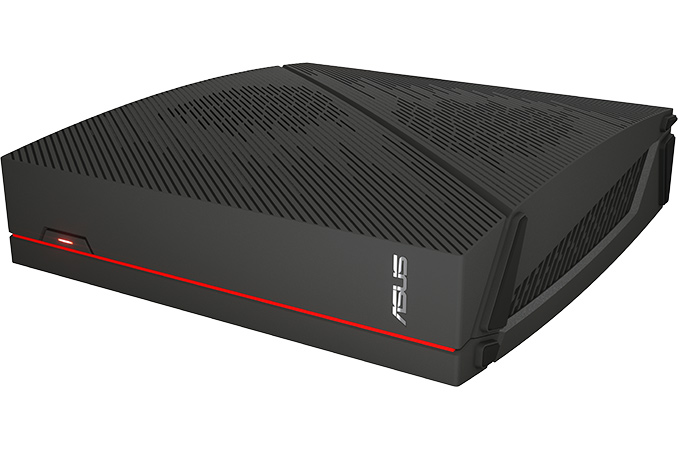


 Quote
Quote
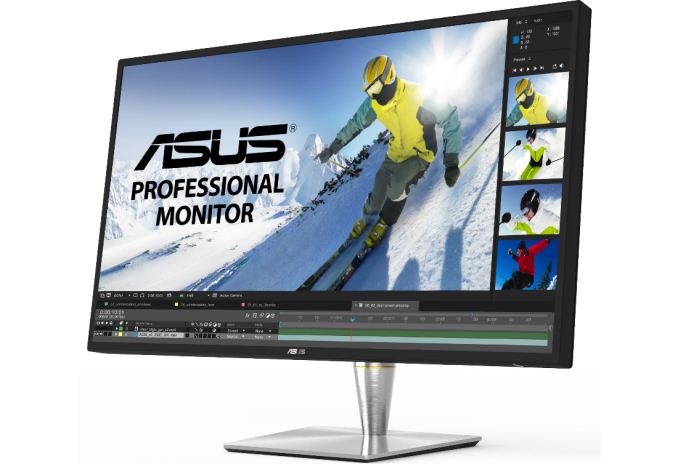
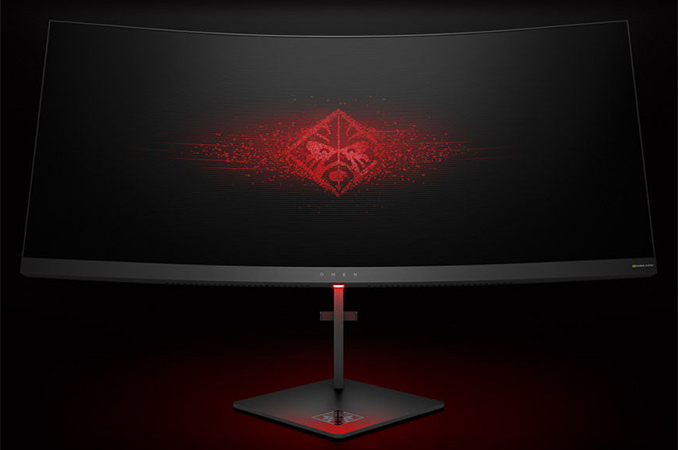
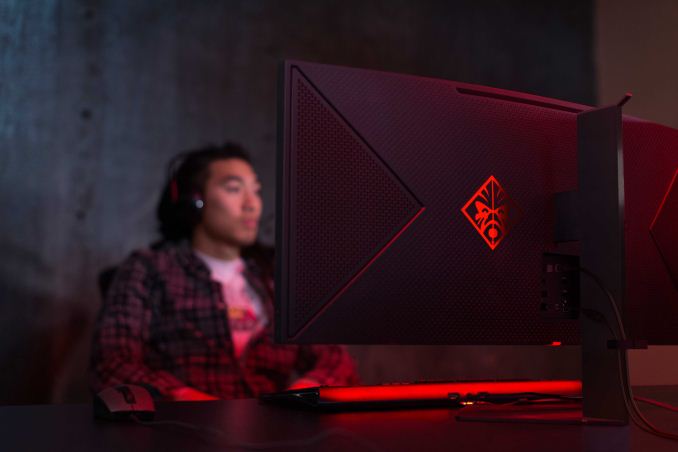
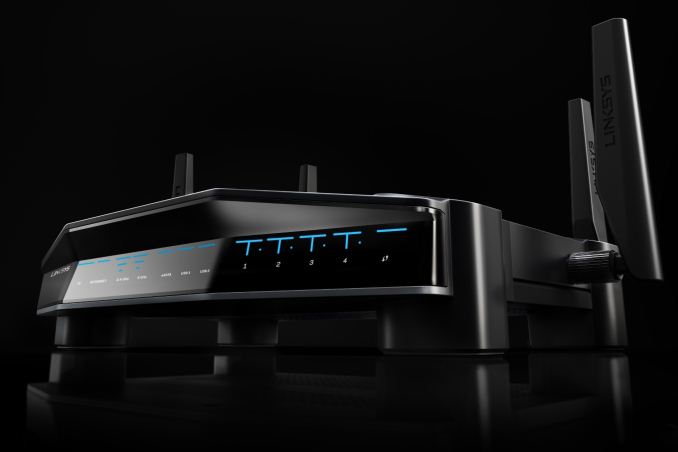

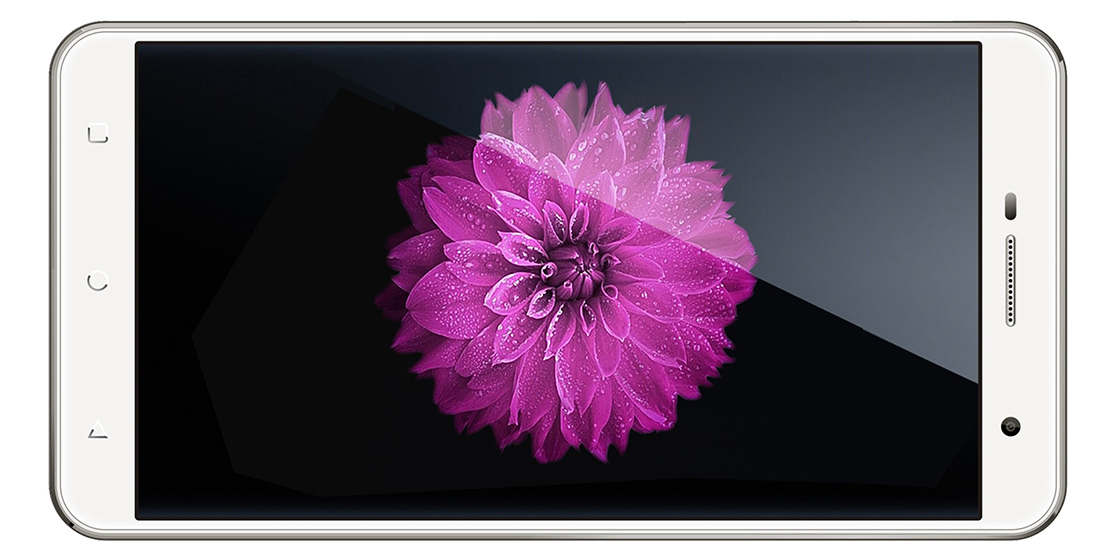
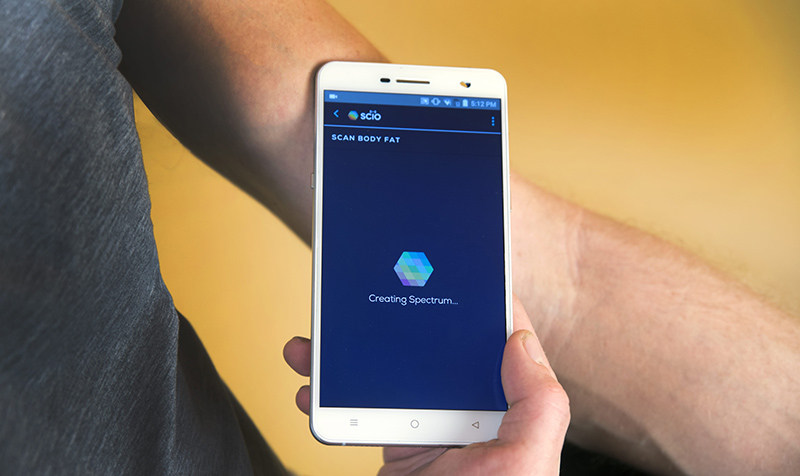
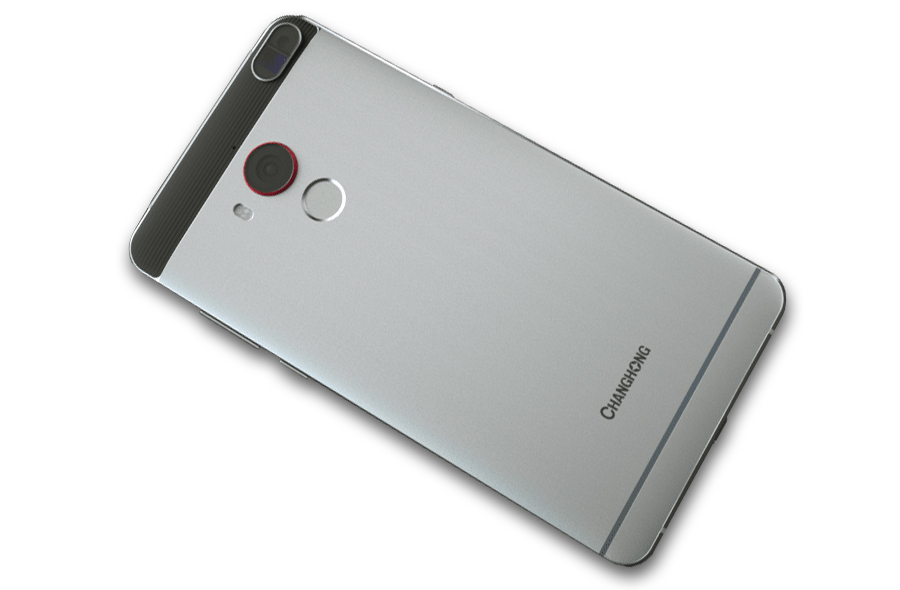
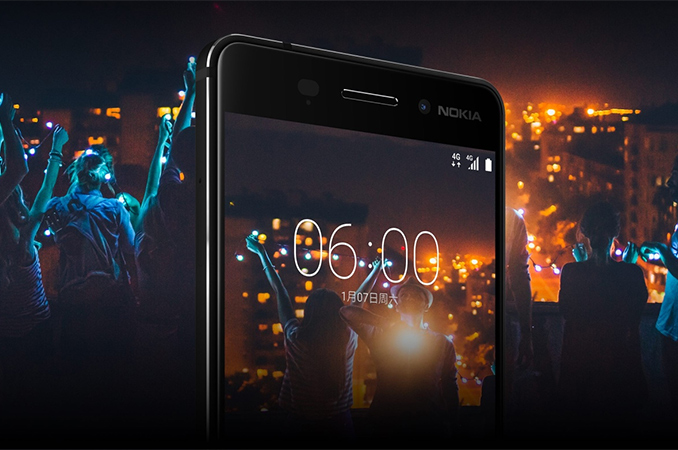
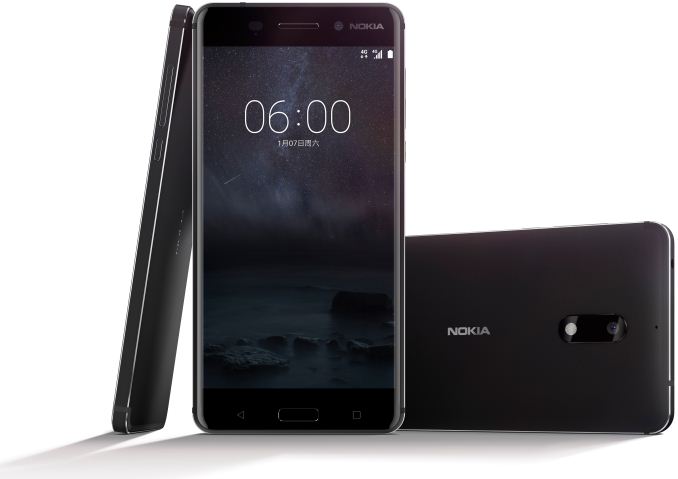

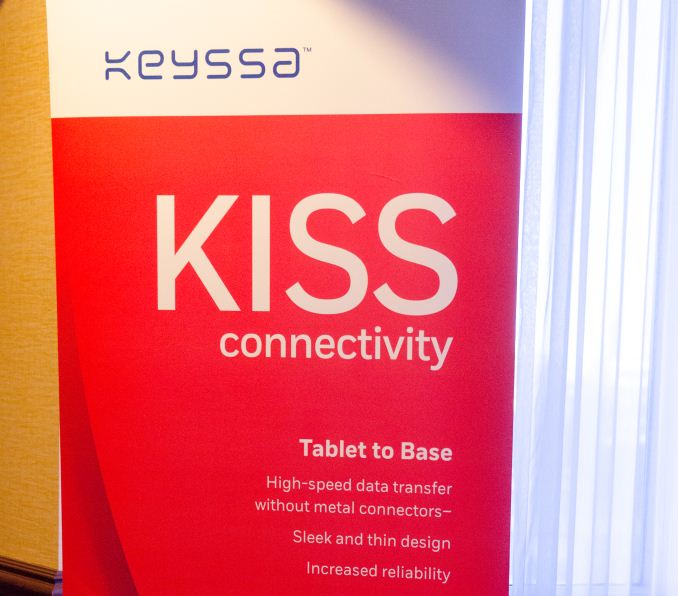

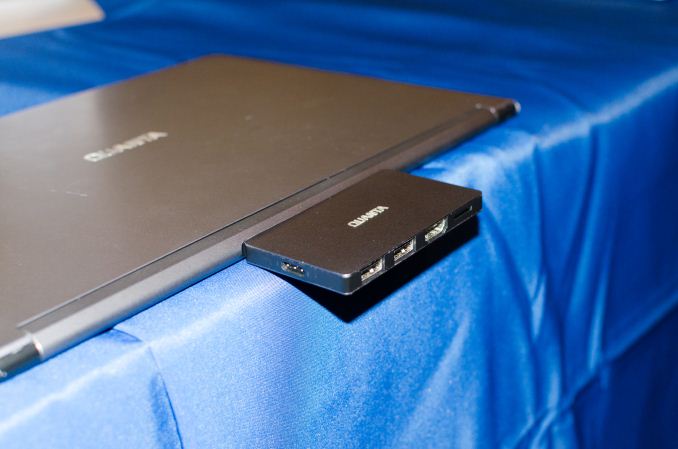
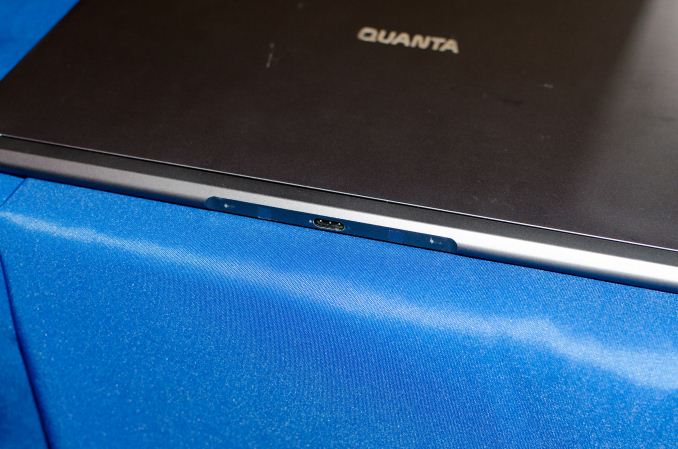
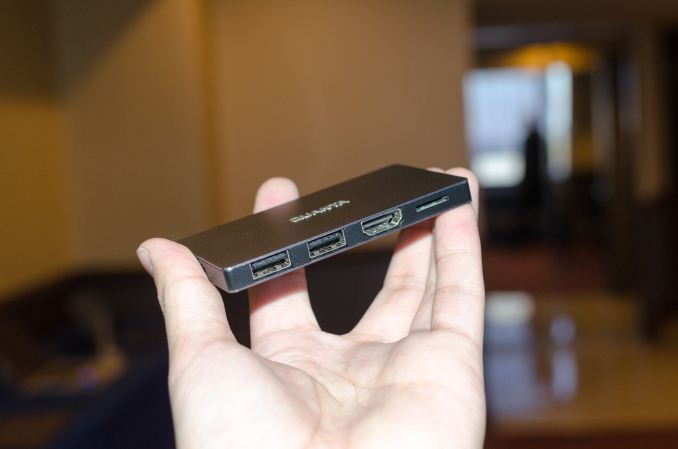
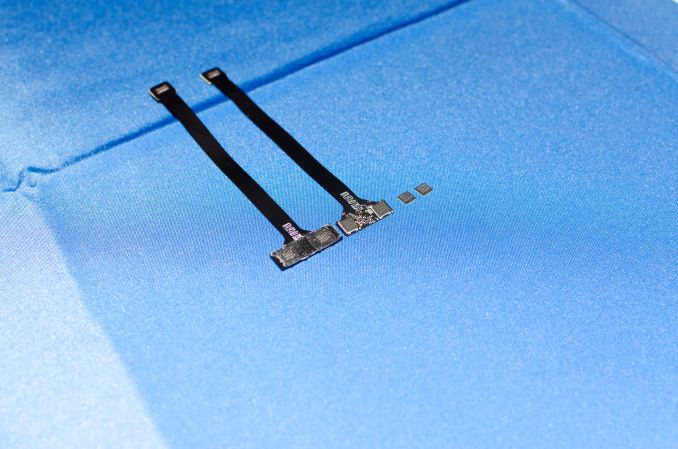
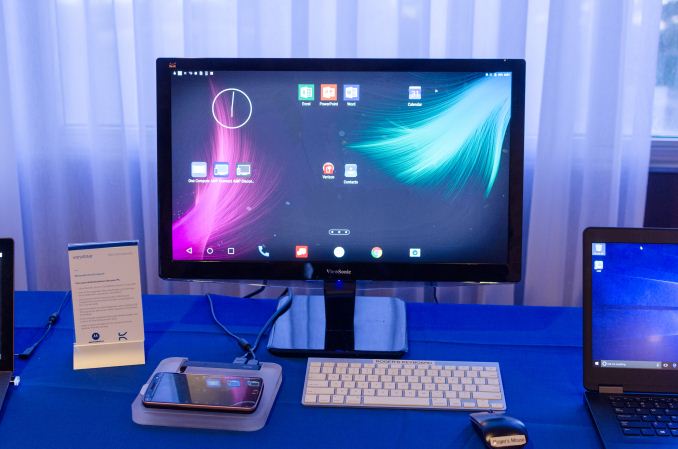
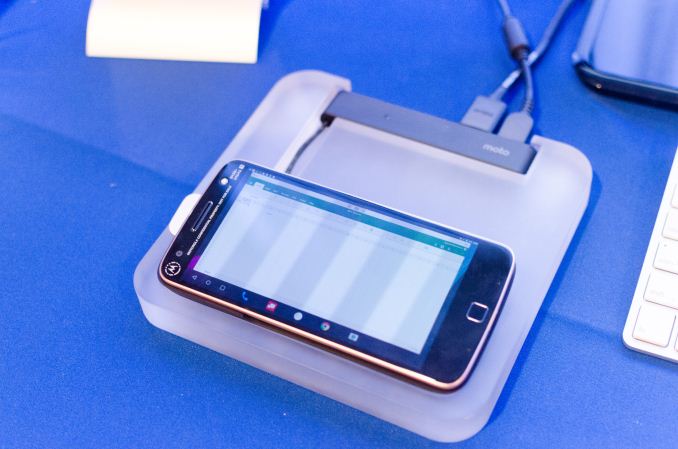

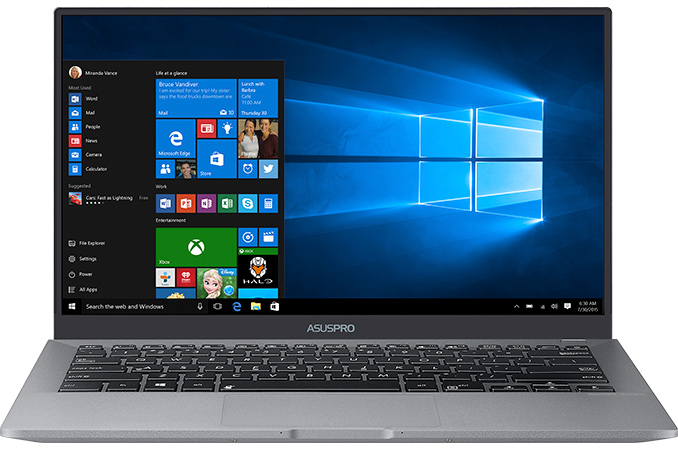

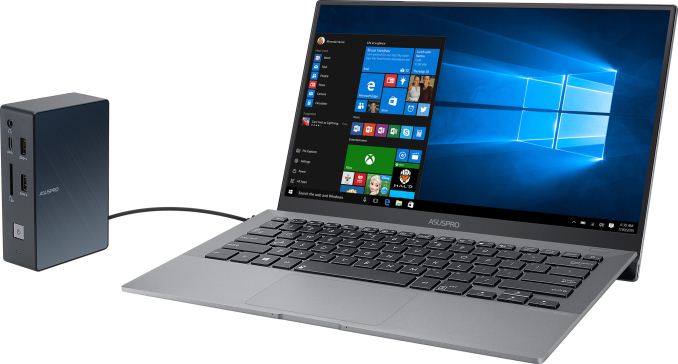

















Bookmarks